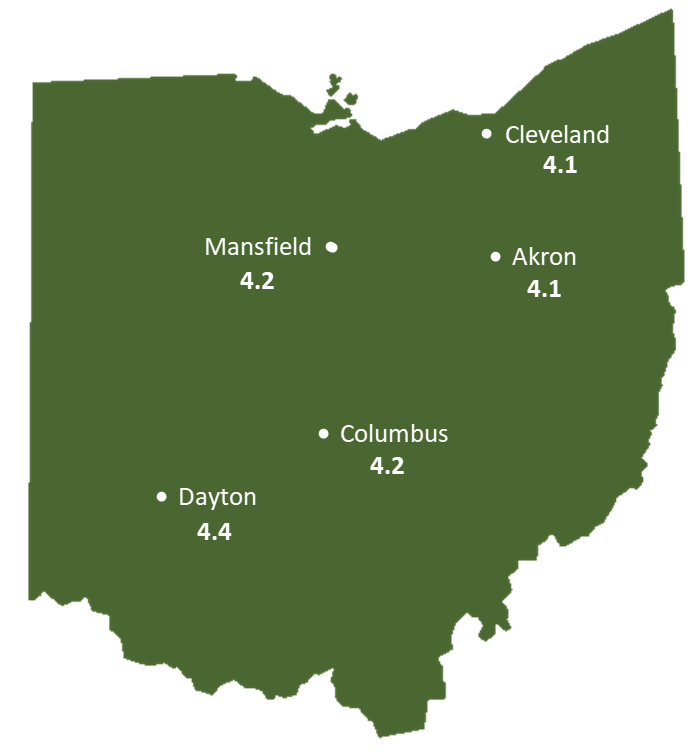Ohio Sunlight Hours & Renewable Energy Information

Quick Green Energy Summary for Ohio
Sunlight
State Sunlight Rank: 38/50
Average Annual Sunlight Hours: 2100 hours
Clear Days: 72 days per year
Summer Peak Sun Hours: 5.26 hours per day
Winter Peak Sun Hours: 2.66 hours per day
Average Peak Sun Hours  : 4.15 hours per day
: 4.15 hours per day
Wind
State Wind Rank  : 30/50
: 30/50
Average Annual Wind Speed: 0.05 miles per hour
More Information on Ohio Green Energy
Ohio ranks very low when looking for the sunniest states in the US. Looking at the average of the entire state, in certain years Ohio could rank as low as 44 out of 50 for sunshine. This may change a few spots depending on the weather patterns of that year.
The northern part of the state – the Cleveland and Toledo areas receive less sun annually than the central and southern cities – Columbus and Cincinnati.
When talking about the state as a whole, which is more difficult to estimate than a specific city. An average estimate for Ohio would be about 1900 – 2400 hours of sunlight annually, or around an average of 70 clear days (when the clouds cover less than 30% of the sky).
However, if you are looking to install solar panels, you have to understand that not every hour of sunlight will be converted at the same efficiency ratio. Certain factors such as time of year, the angle of the sun and panels, varied cloud coverage, tracking mounts, or if you are using the system year round are a few of the factors that could still affect efficiency rations even with enough average sunlight hours. Because of this you can look at average of “peak hours” of sunlight per day, which are the most ideal sunlight hours for solar production. Ohio receives an average of 4-5 peak sun hours a day.
A fixed tilt solar panel does not change angles to adjust with the sun, so looking at the average peak sun hours using a fixed tilt panel can set a good baseline for calculations. On average, the state of Ohio receives 4.15 daily peak sun hours.
This number obviously changes if you were to drill down and examine the peak sunlight hours on a daily basis because of the number of factors that can affect a solar panels ability. Natural factors, such as cloud coverage, weather, time of year and much more all impact the daily sun light hours and amount of solar insolation. Not every hour of sunlight will be converted at the same efficiency ratio, so it can help to look at the average when planning for your year.
 :
: